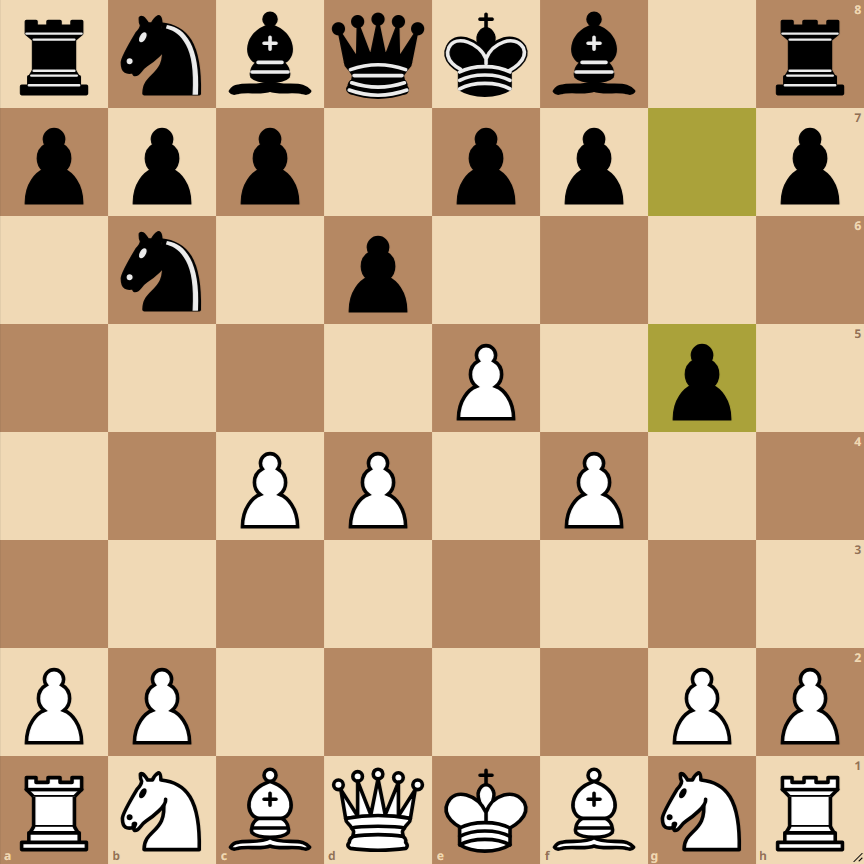How to Play the Alekhine Defense: Four Pawns Attack, Cambridge Gambit Variation
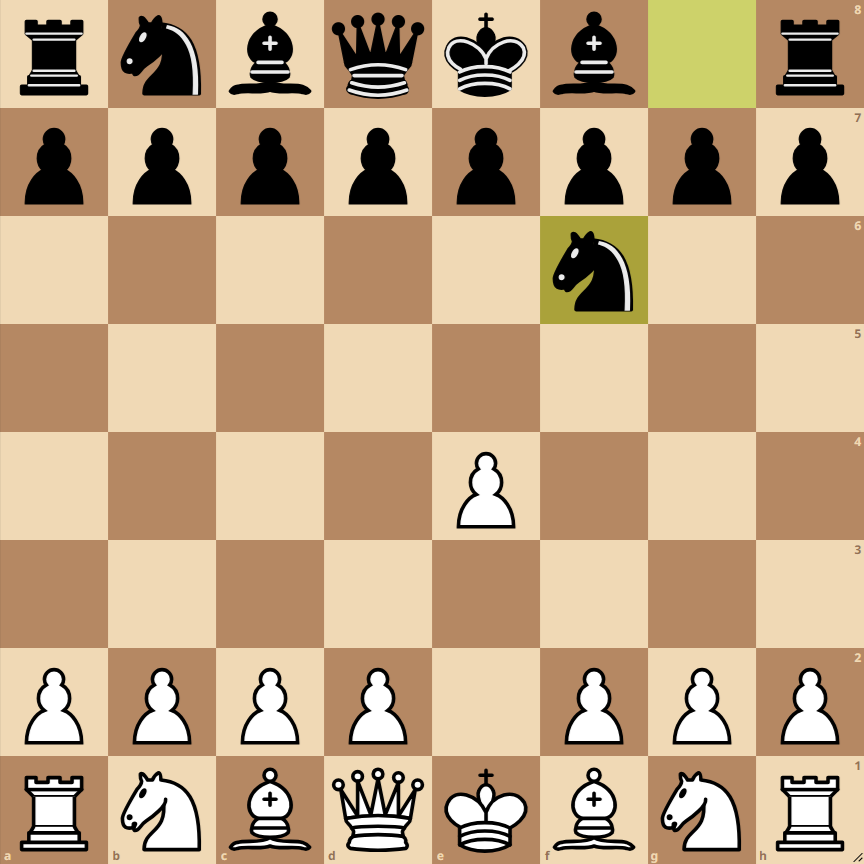
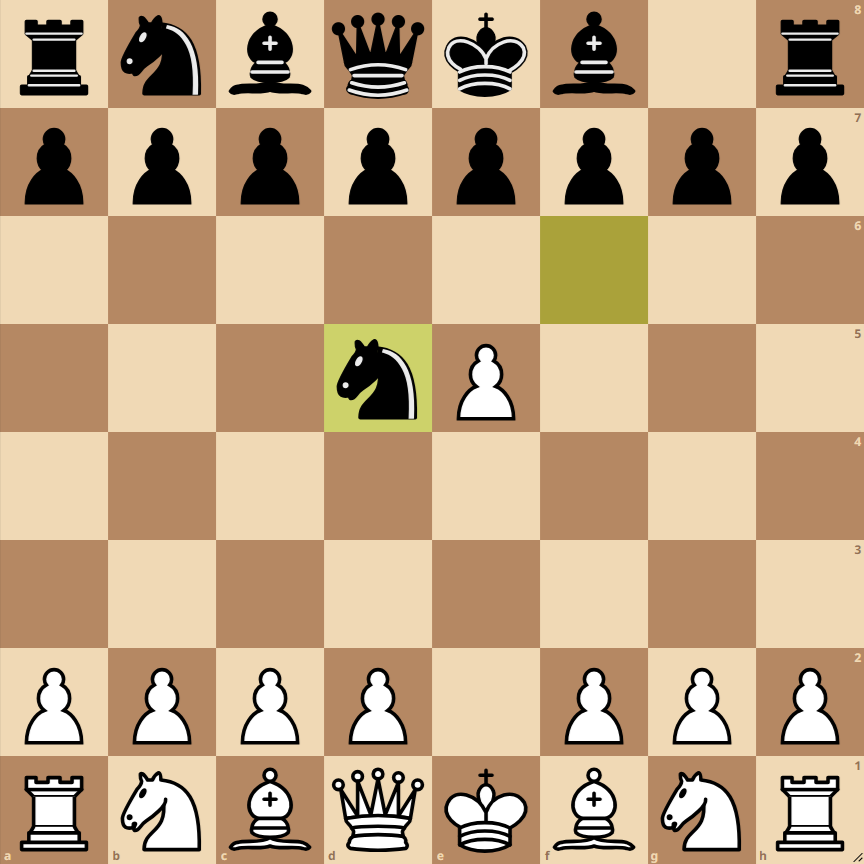
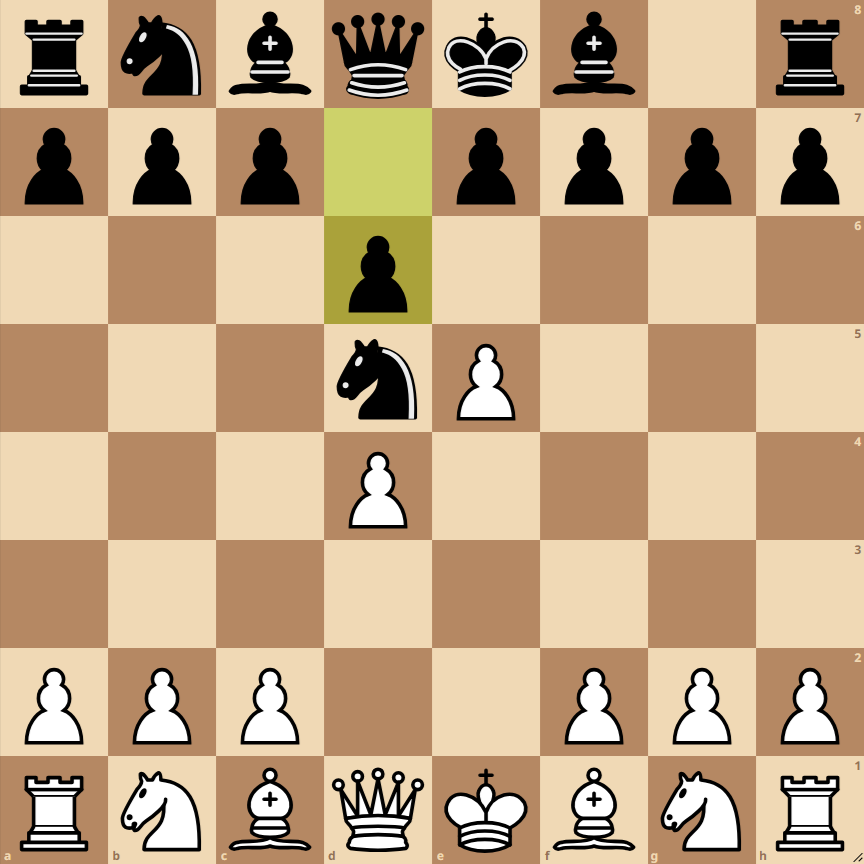
This opening is an aggressive response to the Alekhine Defense and is characterized by a rapid pawn advance in the center and on the kingside. Below are the key moves:
- 1. e4 Nf6: White advances their king’s pawn two squares, controlling the center. Black responds with the knight to the kingside, challenging the e4 pawn.
- 2. e5 Nd5: White advances their e4 pawn to e5, pressuring the f6 knight, which retreats to d5.
- 3. d4 d6: White continues to dominate the center by advancing the d-pawn to d4. Black responds with d6, preparing to break in the center and supporting the knight on d5.
- 4. c4 Nb6: White expands their control in the center by moving the c4 pawn. The black knight retreats to b6, clearing the path for pawns and minor pieces.
- 5. f4 g5: White plays aggressively with f4, reinforcing their pawn center and preparing for a kingside attack. Black responds with g5, a bold counterattack aiming to disrupt white’s pawn structure and open lines for their own attack.
Variations of the Alekhine Defense: Four Pawns Attack, Cambridge Gambit Variation
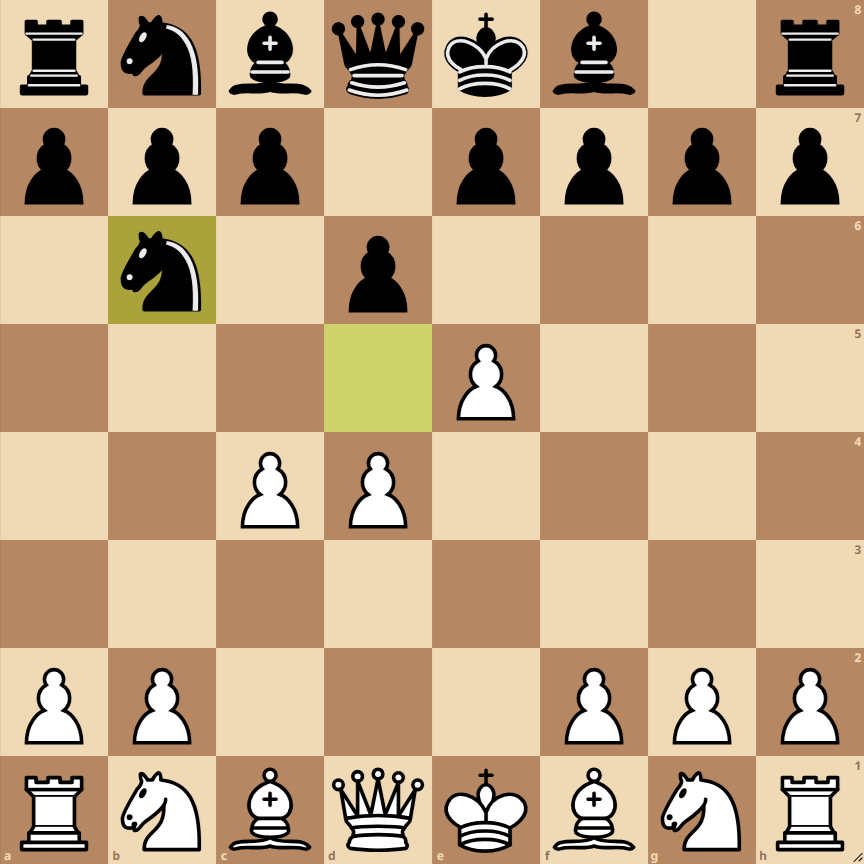
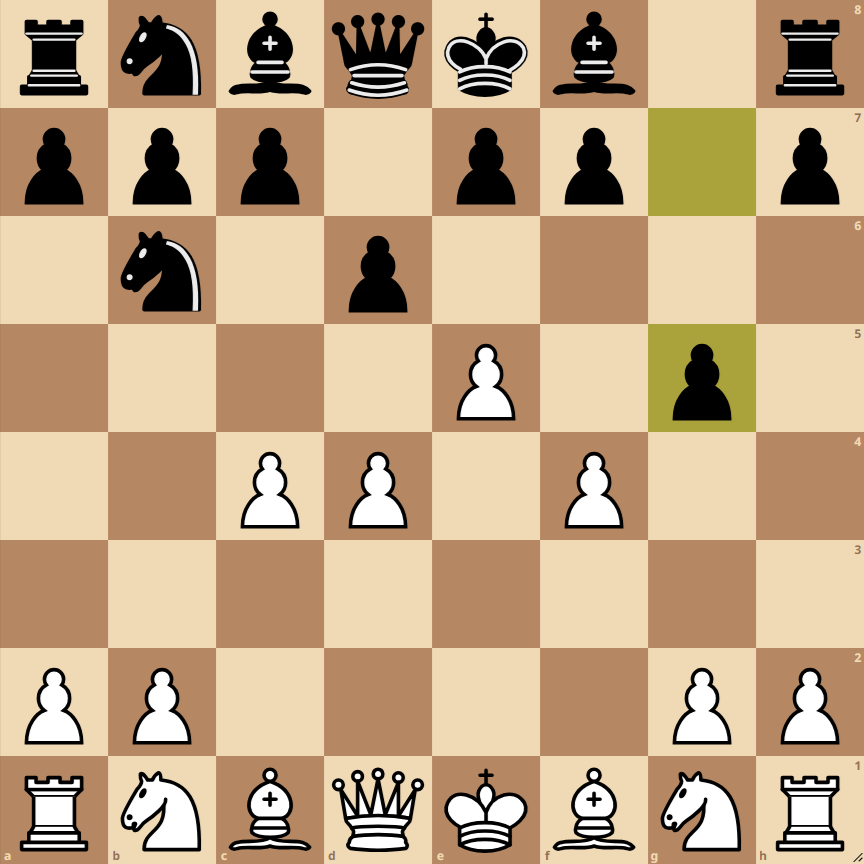
Variation 1: 5…Bg7
In this variation, Black develops their kingside bishop to g7, aiming to control central squares and prepare for kingside castling. This line is safer and less aggressive than 5…g5.
Variation 2: 5…Bg4
Black chooses to develop their queen’s bishop to g4, exerting pressure on the f3 knight and preparing for possible exchanges in the center.
Variation 3: 5…a5
A less common move that seeks to expand the queenside and potentially weaken white’s pawn structure in the center.
Strategic and Tactical Analysis of the Alekhine Defense, Four Pawns Attack, Cambridge Gambit
Introduction:
In the fascinating world of chess, the Alekhine Defense is a bold and provocative opening that invites White to overextend. Specifically, the Four Pawns Attack is an aggressive variation aiming to dominate the center and directly challenge Black. The Cambridge Gambit, with the move 5.f4 followed by g5, adds an additional layer of complexity. This post delves into the position after 1.e4 Nf6 2.e5 Nd5 3.d4 d6 4.c4 Nb6 5.f4 g5, exploring strategies and tactics for both sides.
Central Structure:
After these moves, White has gained significant central space but at the cost of overextending their pawns. Black, on the other hand, has started to counter this center with …g5, challenging White’s pawn structure.
White’s Strategy:
- Exploiting Central Space: With their dominance in the center, White can look for opportunities to advance pawns and create weaknesses in Black’s position.
- Development and King’s Safety: It’s crucial for White to develop their minor pieces quickly and consider castling to ensure the safety of their king.
- Move Options: Moves like exd6, fxg5, or Nf3 are critical.
- exd6: Opens the e-file and seeks to exchange a central pawn for a flank pawn of Black.
- fxg5: Captures the pawn on g5, aiming to disrupt Black’s pawn structure.
- Nf3: Develops a piece and supports the pawn on e5, maintaining central tension.
Black’s Strategy:
- Dynamic Counterplay: Exploit White’s overextension. Moves like …Bg7 and …O-O can be considered to increase the activity of Black’s pieces.
- Focus on Counterattack: Black should be alert to weaknesses in White’s pawn structure, especially if White decides to capture on d6 or g5.
- Preparation for Transition: Be ready for tactical transitions that may arise, especially if White decides to open the center with exd6 or alter the pawn structure with fxg5.
Conclusion:
This position in the Alekhine Defense, Four Pawns Attack, Cambridge Gambit, is a vibrant example of the battle between space and counterplay. While White seeks to capitalize on their spatial advantage, Black must be clever and dynamic to exploit their opponent’s potential overextension. Moves like exd6, fxg5, and Nf3 are critical and can define the course of the game, making it exciting both to play and analyze.

